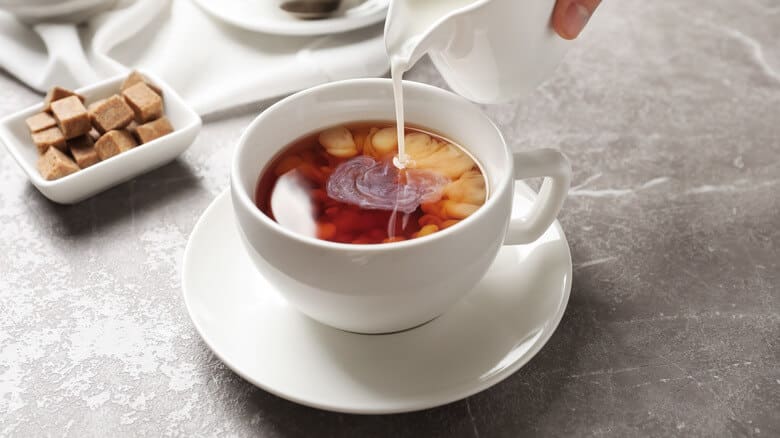The first time I saw milk being poured into tea, I froze in disbelief. My brain instantly screamed, “Wait—what are you doing?!” For me, tea had always meant lemon, honey, or maybe even a dramatic splash of steam, but never milk. Then I moved to the UK, where tea isn’t just a drink—it’s practically a national religion. People here will happily debate for ten minutes about leaf strength, steeping time, and whether milk goes in before or after the tea. (Spoiler: that question alone is its own battlefield.)
The Origins of Adding Milk to Tea
So why do the British do this? The tradition of putting milk in tea goes all the way back to the 1600s. Tea first arrived in Britain with Catherine of Braganza, a Portuguese princess who married King Charles II. At the time, it was an expensive luxury enjoyed only by the upper classes—and they drank it black. But as tea became more affordable and available to the general public, people began experimenting. Adding milk wasn’t just about taste. Some believe it was done to prevent the delicate china cups from cracking when hot tea was poured in. Others say it helped reduce bitterness. And for many, it was simply about making the drink creamier and smoother.
There’s also a fascinating social angle. Back then, adding milk was sometimes seen as a mark of refinement and wealth, showing off both your tea leaves and your fine china. Many people even poured the milk into the cup before the tea to protect their fragile porcelain. Over time, the habit stuck, and milk tea became part of the cultural fabric.
From Necessity to Everyday Habit
Even after tea grew cheaper and more widespread, the tradition of adding milk never went away. Strong black tea, slightly bitter on its own, became far more enjoyable with a splash of creaminess. It wasn’t just about taste—it became a symbol of “Britishness,” a custom passed down through generations and proudly carried abroad.
How It Differs from America
Across the Atlantic, things developed differently. In the United States, tea is popular but often served iced and almost always without milk. While some Americans do enjoy milk in their tea, it’s far less common and varies depending on cultural influences. Immigrant traditions have shaped a mix of tea habits, but milk-and-tea as a cultural norm never really took hold the way it did in Britain.
Do the British Always Add Milk?
Not necessarily! While milk with black tea is standard, many Brits drink other varieties—like green tea or herbal infusions—without milk. It’s ultimately a matter of personal taste. Some pour milk first, some after. Others sweeten it with sugar or honey. The “right” way depends entirely on who you ask.
The Bottom Line
What started as a way to protect china cups and mellow out bitter brews has grown into one of the most iconic habits in British culture. Whether you prefer your tea with milk or without, one thing is certain: for the British, this isn’t just a beverage—it’s comfort in a cup, a daily ritual, and a tradition they’re proud of. So the real question is—how do you take your tea?
